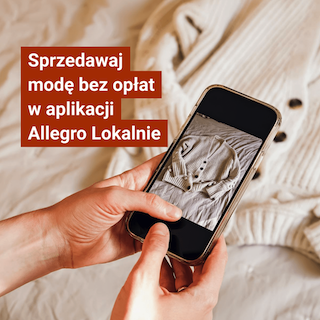Rabini studiujący Talmud - dwustronny obraz 100 cm x 100 cm olej na płótnie sygnowany Pa Ko Hoenich 1928, na odwrocie Dwaj chłopcy bawiący się w rzece, sygnowany (?)
Paul Konrad Hoenich (1907 - 1997) urodził się w Czerniowcach na terenie austro-węgierskiej Bukowiny (1918 - 1940 należało do Rumunii, a obecnie znajduje się na terenie Ukrainy). W latach 1925-1928 studiował malarstwo w Wiedniu, Florencji i Paryżu. W 1929 roku służył w rumuńskiej armii. W latach 1930-1935 mieszkał w Bukareszcie gdzie pracował jako nauczyciel i artysta. W 1933 roku reprezentował Rumunię na międzynarodowej wystawie grafiki w Polsce.
(Pierwsza Międzynarodowa Wystawa Drzeworytów, zorganizowana przez warszawski Instytut Propagandy Sztuki : katalog = catalogue : MCMXXXIII : Kraków, listopad - grudzień 1933. Międzynarodowa Wystawa Drzeworytów (1 ; 1933 ; Kraków).
Pierwsza Międzynarodowa Wystawa Drzeworytów w Warszawie : katalog = 1-e exposition internationale de gravures orginales sur bois a Varsovie : catalogue / [przedm. Mieczysław Treter]. Międzynarodowa Wystawa Drzeworytów (1 ; 1933 ; Kraków).)
W 1935 wyemigrował wraz z żoną do Palestyny i zamieszkał w Haifie. W 1936 roku założył lokalną szkołę plastyczną. W 1950 roku rozpoczął wykłady w Technion (Israel Institute of Technology) w Haifie. Nauczał dwuwymiarowego designu na Wydziale Architektury. W 1951 roku miał indywidualną wystawę w Center for Fine Arts in Brussels w Belgii. W 1966 został przez Technion mianowany profesorem nadzwyczajnym i prowadził badania nad zagadnieniami malarstwa i koloru.
Studia
1925 Höhere Graphische Bundes-Lehr- und Versuchsanstalt, Vienna, Austria
1926 Academia di Bella Arti, Florence, Italy
1927-1928 Academie de la Grande Chaumiere, Paris, France
Wykłady
1930–35 Bucharest, art
1936–54 Private art school, Haifa
1950–66 Two-dimensional design, Faculty of Architecture, Technion, Haifa
Since 1966 Associate professor, Technion, Haifa
Wystawy
1951 - Center for Fine Arts in Brussels, Belgium
Prof. Emeritus Paul Konrad Hoenich (1907-1997), nicknamed PeKA, was born in Czernowitz, in Bukovina (Austria-Hungary) and died in Haifa.
In 1925-1928, he studied art in the Academies of Vienna, Florence and Paris:
1925 Höhere Graphische Bundes-Lehr- und Versuchsanstalt, Vienna, Austria
1926 Academia di Bella Arti, Florence, Italy
1927-1928 Academie de la Grande Chaumiere, Paris, France
In 1929, he served in the Rumanian army. In 1930-1935, he lived in Bucharest, Rumania, where he worked as a teacher and artist. In his home town of Czernowitz, Paul Conrad Hoenich actively participated in art exhibitions as a painter, graphic artist and book illustrator. He was the only artist from Czernowitz at that time, who’s art objects were purchased by the National Museum in Bucharest. The German-language newspaper «Der Tag» (№ 420 1933) in Czernowitz notes that "Hoenich's works were in all major private collections in Bucharest, especially in the royal collections."
He represented Rumania in an international exhibition of etchings in Poland.
In 1935 he immigrated to Eretz Yisrael with his wife Ruth and settled in Haifa, where in 1936 he established a local art school.
In these years, he created woodcuts and graphic cycles on the subject of the Holocaust and the history of the Jewish nation, and several books with his illustrations appeared. Hoenich's paintings and etchings are expressionist in style. His "Derech Golim" series (1943), for example, consists of 13 expressionist etchings on topics related to Jewish history. In the years 1940-1950, many unusual paintings appeared. Portraits, landscapes and still lifes with outstanding artistry, rich and harmonious colors, wide expressive brush strokes and psychological decorative paintings.
In 1950, he began to lecture at the Technion in Haifa as a faculty member. He taught courses in two-dimensional design, color theory and experimental art in the Faculty of Architecture. In 1951, he had a one-man show at the Center for Fine Arts in Brussels, Belgium.
During the years 1960 - 1980, he was engaged in the development of design ideas using sunrays. In the 1960s, his study of art and automatic technology ("Robot-Art") was published in various journals. In 1966, he was appointed an associate professor by the Technion and researched various topics related to paint and color.
In the 1970s, inspired by his work at the Technion, he created several avant-garde kinetic works that make use of light rays. In the 1980s, he went back to traditional painting.
The gallery which is located at the center of the Technion's Faculty of Architecture and Town Planning in Haifa is named as the PeKA Hoenich Gallery of Experimental Art and Architecture. The PeKA Hoenich Gallery was established through the generosity of his family.
PeKA's works were exhibited throughout Israel and the entire world and, in their unique style, they make reference to the main artistic currents that were active in Europe in the 1930s - 1950s.





